Finding a roof leak before it causes long-term damage to your home is crucial.
But, sometimes, finding that leak isn’t as easy as you might think. And while you’ve dedicated an entire day to chasing it down, using the right strategy will make all the difference if you’re going to be able to confidently find it and fix your roof leak.
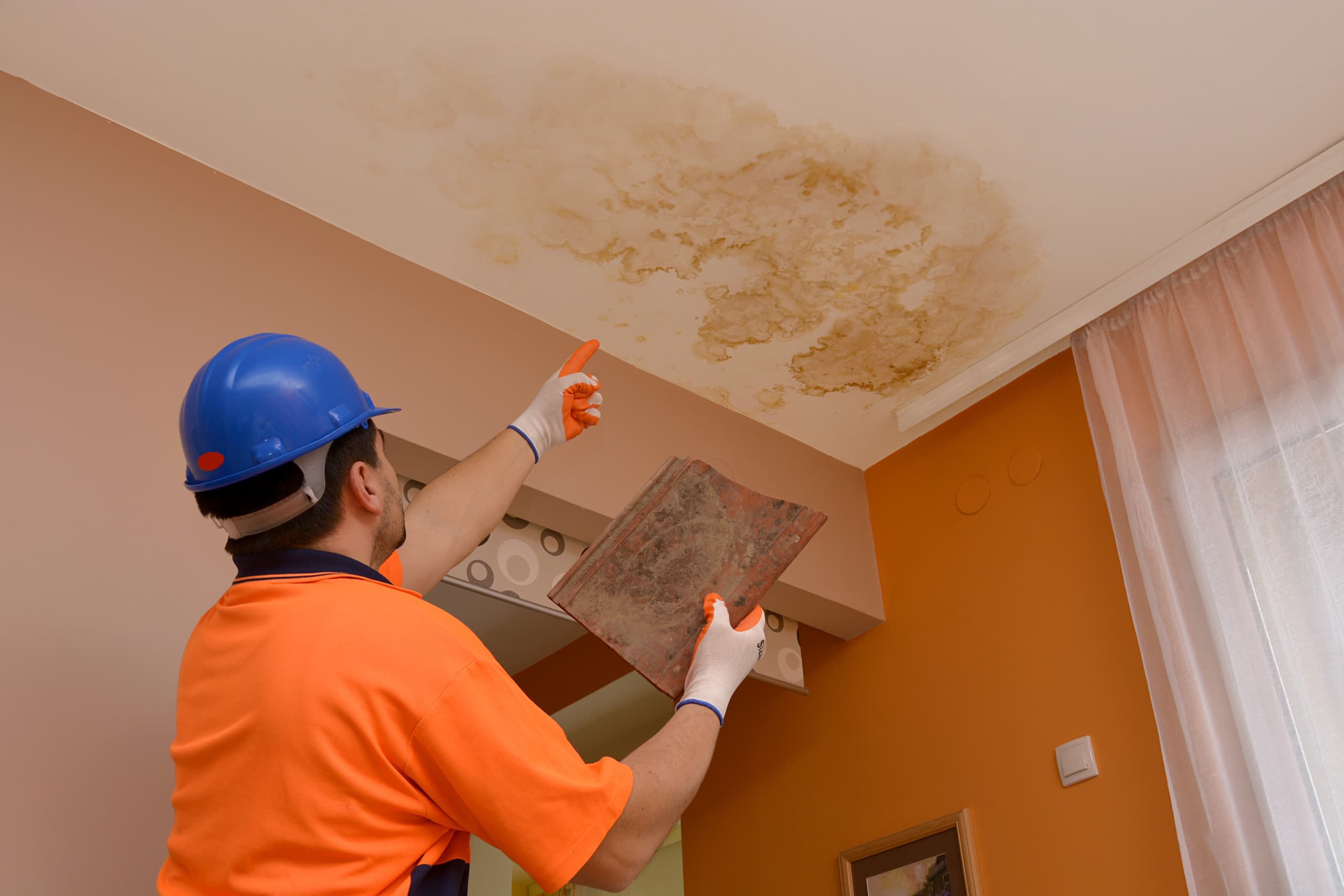
How To Find A Roof Leak:
1. Start in the Attic
If your home has an attic space, that’s the best place to start looking for leaks. Not every home has an attic space, and few homes have more than a crawl space in the attic to access, so be careful while you’re up there.
If your home doesn’t have an attic space or is otherwise inaccessible, you’ll need to start by checking the ceiling of any rooms below where you suspect there may be leaks.
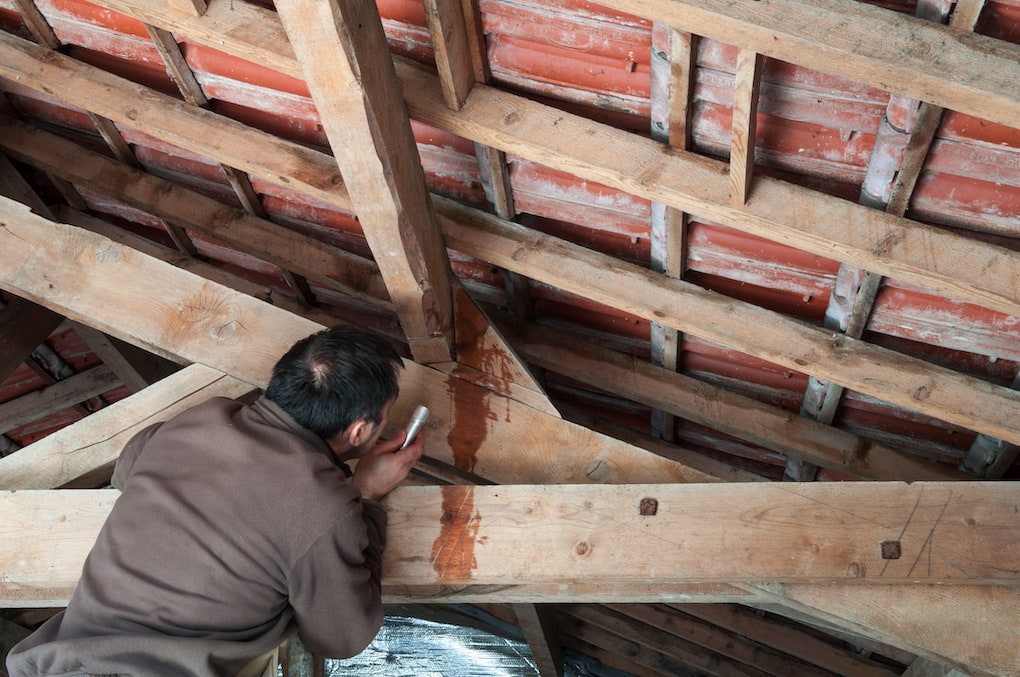
2. Follow Damaged Insulation To The Source
If you have an attic space or crawlspace, look for signs of water damage on insulation. Water will often follow the path of least resistance, and that includes insulation. When insulation has continually gotten wet, you’ll be able to see the path that it’s taken over time. The insulation will be stained from the water.
After you’ve found the path that the water has traveled, you’ll be able to see both where it stops and where it starts. However, water might be entering in one place and rolling down your roof truss before finding its way to the ceiling below. Be sure to account for this when you’re determining where that leak comes in. At the very least, finding the damaged insulation will give you a good idea of where the leak is starting.
3. Inspect the Roof for Holes or foreign Objects
Next, you can start checking the roof for any visible signs of damage. If the hole or leak is small, then it’s going to be difficult to spot from the ground. You’ll need to get up there and take a closer look, but sometimes you might still not be able to find the damage.
Look for obvious cracks or holes in your roof, especially ones that are bigger than a small pinhole. You can also take a very close look at how the roof is attached to your home – sometimes leaks happen because of worn-out flashing or nails popping out of the roof.
If you’re not able to find anything on the outside, then look around on the inside for foreign objects that might have punctured your roof or places where you can still see daylight from the inside. If you aren’t confident you found all the holes, the roof inspection experts at K&D Roofing are happy to help.
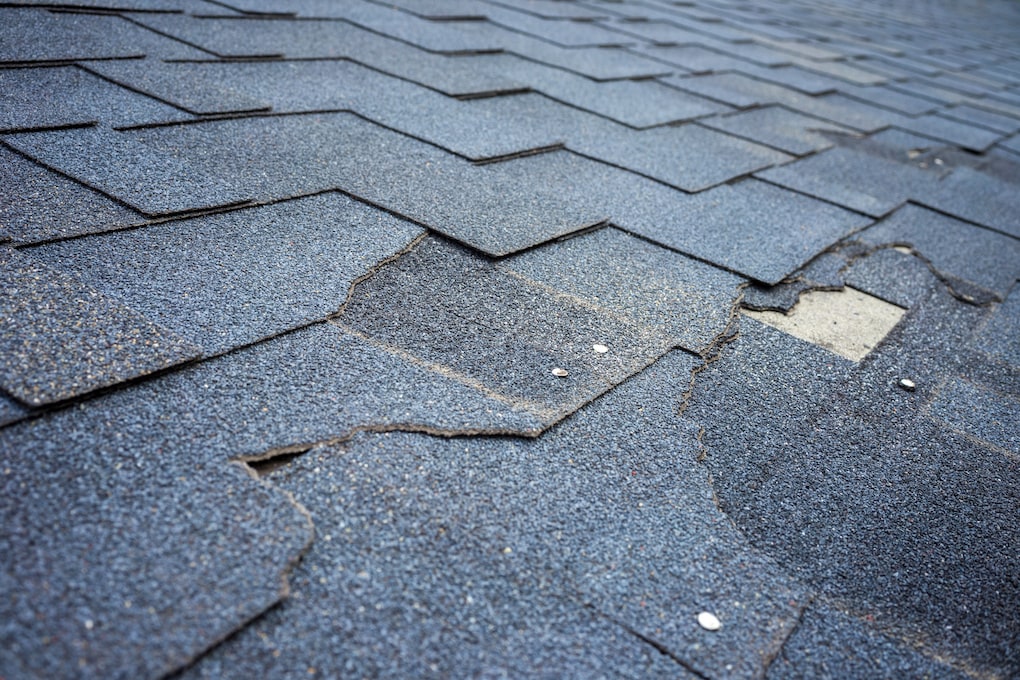
4. Wet Down Your Roof to Look for the Leak on Clear Days
Finally, you can check for leaks by wetting down the roof with a hose. It might be hard to get into the attic on rainy days, and you definitely shouldn’t be on your roof in the rain. So, instead of waiting for rain or trying to find it on a rainy day, you can spray down the roof with a hose.
Not much water will be needed, simply spray it down for a few minutes and then head inside to see where the water is coming in. If you’re not able to tell without constant water flow, then have a family member or friend spray down the roof while you check for the leak. Having the proper nozzel for your hose will make the spraying process much easier.
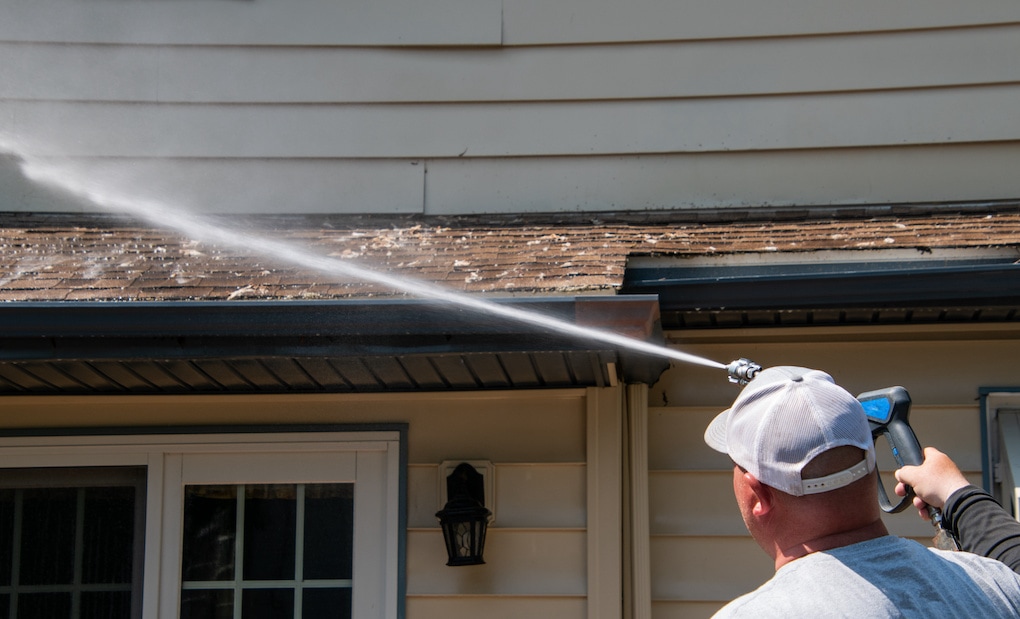
5. Start on the Repair
Now that you’ve found your leak, you’ll be ready to start the repair. When the leaks are small and the damage minimal, the repairs shouldn’t be too difficult. Sometimes you might need to replace a few shingles, and other times it will be as simple as using roofing cement to fill the small hole and keep water rolling off your roof.
When to Call a Roofing Company
A DIY repair will save you money, especially if it’s a small repair that doesn’t take a lot of effort, but it’s almost important that you know when to call the professionals for help on your roof.
When it comes to roof leaks, you should call the professionals if there are any large amounts of damage or if the leak starts small and gradually grows more intense. Fixing these problems fast enough so that you don’t have long-term damage, mold, or mildew growth will be important.
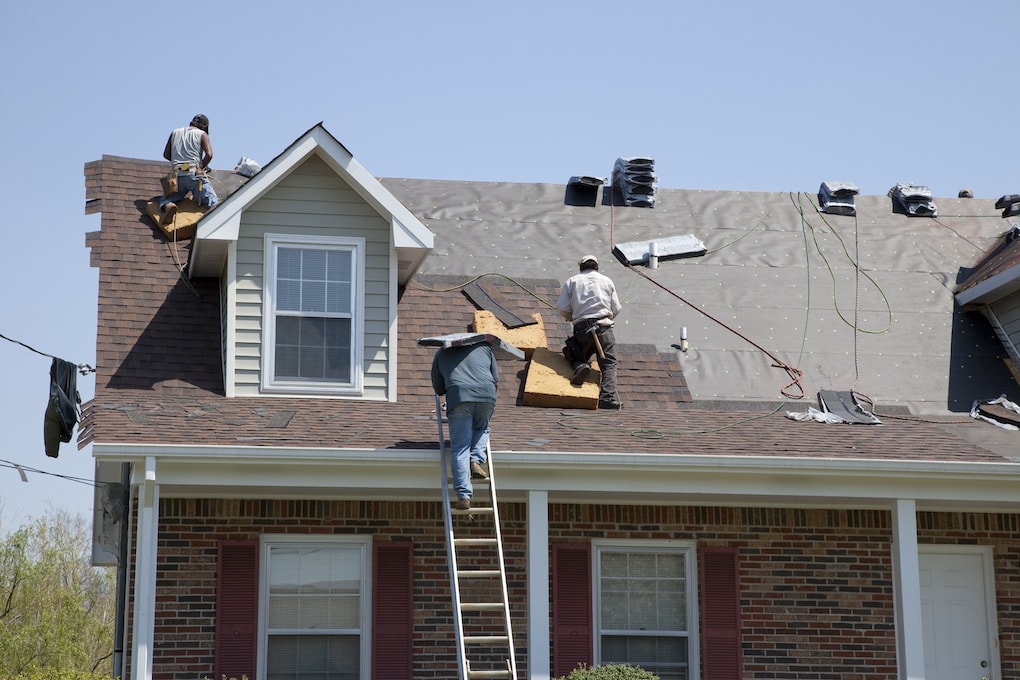
Contact K&D Roofing To Set Up Your FREE Roof Inspection
If you need help finding and repairing a roof leak, the K&D Roofing team can help you quickly find and fix the damage. Whether it’s a big project like storm damage or a small annoying leak, we’ve got your back. Contact us today to get started with your free inspection.

